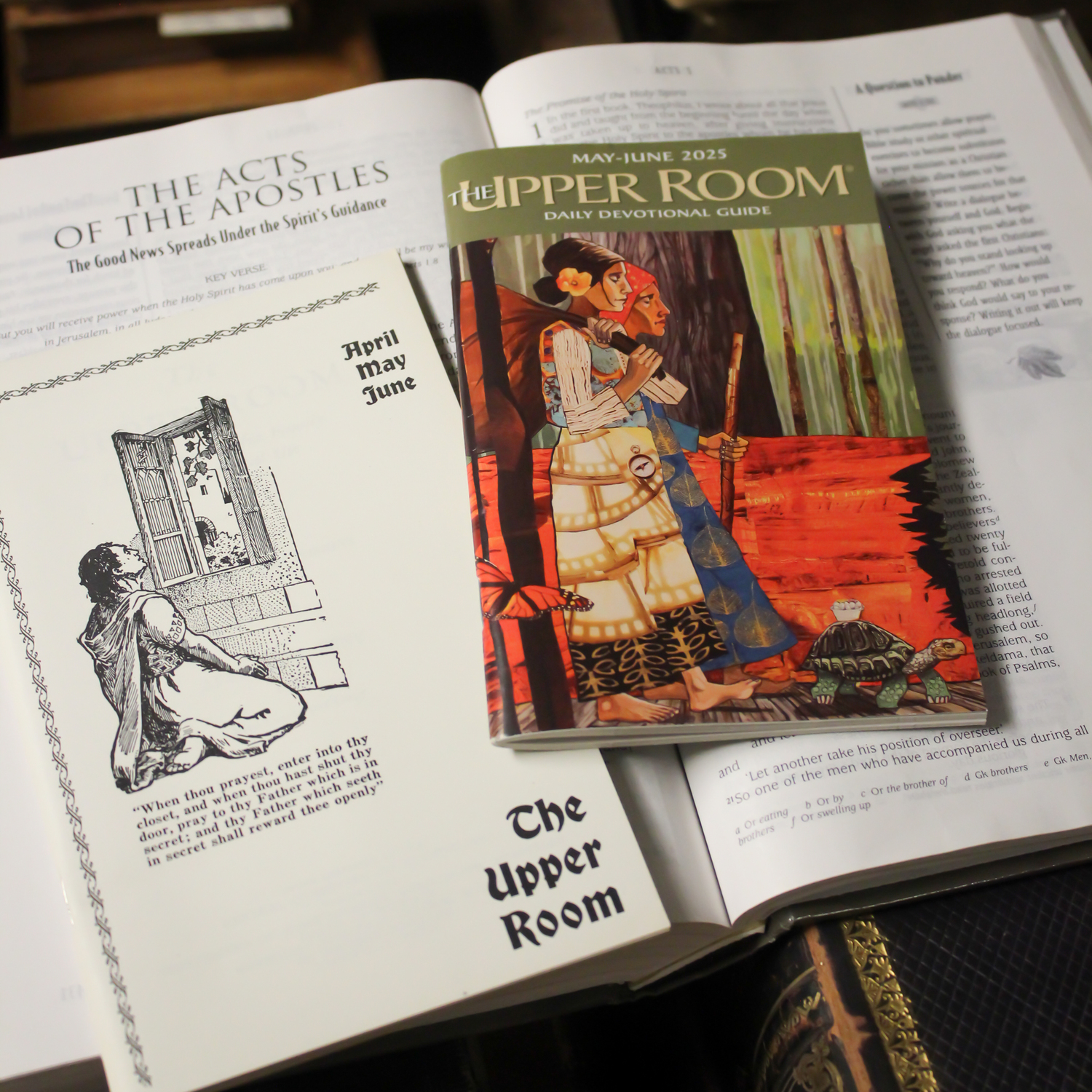
On the flight home from a vacation out west, my seatmate asked me what I do for a living. When I told her, she said she knew The Upper Room well because her grandmother was a longtime reader. This is not an uncommon experience. Someone asks me about my job, I tell them, and they go on to talk about their connection to The Upper Room.
I would be lying if I said I don’t love these interactions. They remind me that my work has value and that I am part of something with a reach that extends far beyond what I’m actively thinking about each day. It began long before me and will hopefully continue long after I’m gone.

The Upper Room daily devotional guide goes back several decades — nine to be exact. This year, 2025, we celebrate our 90th year of publication. The story of our origin and subsequent history is varied, full, and rich. And it all started with a mustard seed. Frances Craig, a member of a Methodist church in San Antonio, Texas, and Dr. Grover Emmons, a preacher with all the right connections, recognized the need for a devotional resource for daily home use. Through their hard work, prayer, and ingenuity, they made it happen. The inaugural issue was already at the printer when Dr. Emmons got the idea for the name of the new magazine while listening to a sermon on the upper room and the events of Pentecost from Acts 1 and 2.
The first issue went to press in 1935 with a print run of 100,000 copies. We were soon printing half a million copies, and the number continued to grow. While we’ve made small changes to the size and format over the years, the core attributes of the magazine remain unchanged — the daily pattern of prayer and meditation, fine art on the cover, ordinary people sharing their faith stories, and the devotional guide’s global character.
El Aposento Alto, the Spanish-language edition of The Upper Room, appeared on the scene in 1938, making it almost as old as the English-language edition and our longest-running translation. In the years since, we’ve grown to more than 30 language editions in over 100 countries around the world. The Upper Room has survived, among other challenges, wars, a national paper shortage, significant shifts in the publishing industry, and a global pandemic.
In the decades since our founding, our vision has expanded beyond the daily devotional guide to include other magazines, book publishing, and programs. Some of our offerings have changed with demand and the spiritual needs of the community we serve. In addition to the daily devotional guide, our current publication and program resources include Upper Room Books, The Academy for Spiritual Formation, and the Walk to Emmaus.
While our roots are in the Methodist church, our content and mission are ecumenical, and we work hard to remain true to the biblical story from which we take our name. The Upper Room is a place where everyone, in all our God-given variety and diversity, can gather to share experiences of how God is working in our lives.
Why am I telling you all this? I think it’s for the same reason that I feel a sense of (holy?) pride when someone on a plane shares a memory of The Upper Room or, even better, tells me that they read it every day — to remind me that I am a small part of something that is much larger than myself, a story that started almost a century ago and continues on. You are part of that story too, and I do this work for you. It wouldn’t mean much if you weren’t on the other end. Thank you for being there. Once the magazine is out in the world, I don’t always think about where it goes or what it does. If and when our paths cross, I hope you will tell me about it.

Andrew Garland Breeden serves as Senior Editor for The Upper Room daily devotional guide.
This article was adapted from The Upper Room daily devotional guide, September-October 2025 issue.

What daily rhythms connect you to God and others?
Where do you see God’s faithfulness over the decades?
What seeds of faith have you planted — or seen grow?
Who are you grateful to in your spiritual lineage?
Share your responses with others in the comments below!